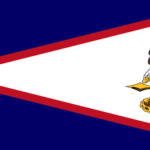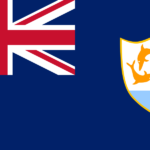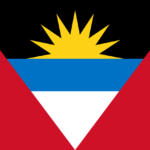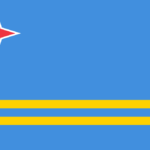Argentina
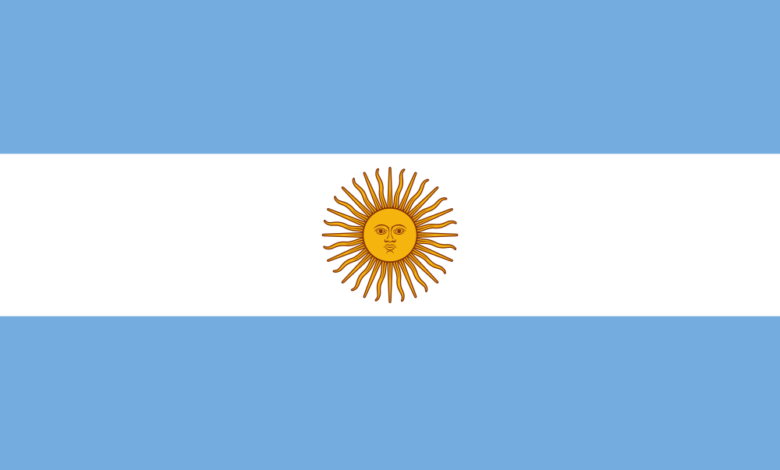
Discover Argentina, the capital city, landmarks, surface area and much more. Argentina is the 8th largest country in the world, the fourth-largest country in the Americas and the second-largest country in South America after Brazil. The country has a surface area of 2,780,400 km².
It shares the bulk of the Southern Cone with Chile to the west, and is also bordered by Bolivia and Paraguay to the north, Brazil to the northeast, Uruguay and the South Atlantic Ocean to the east, and the Drake Passage to the south. Argentina is a federal state subdivided into twenty-three provinces, and one autonomous city, which is the federal capital and largest city of the nation, Buenos Aires. The provinces and the capital have their own constitutions but exist under a federal system. Argentina claims sovereignty over the Falkland Islands, South Georgia and the South Sandwich Islands, and a part of Antarctica.
Argentina has a population of 45.4 million people (in 2020); the capital and largest city are Buenos Aires. Spoken languages are Spanish (official), English, Italian, German, and French in their respective communities.
Country Profile
| Capital
and largest city
|
Buenos Aires 34°36′S 58°23′W |
|---|---|
| Official languages | Spanish[a] |
| Recognized regional languages | |
| Religion
(2022)[7]
|
|
| Demonym(s) |
|
| Government | Federal Presidential Republic |
| Alberto Fernández | |
| Cristina Fernández de Kirchner | |
| Juan Luis Manzur | |
| Cecilia Moreau | |
| Horacio Rosatti | |
| Legislature | National Congress |
| Senate | |
| Chamber of Deputies | |
| Independence
from Spain
|
|
| 25 May 1810 | |
|
• Declared
|
9 July 1816 |
| 1 May 1853 | |
| Area | |
|
• Total
|
2,780,400 km2 (1,073,500 sq mi)[B] (8th) |
|
• Water (%)
|
1.57 |
| Population | |
|
• 2022 census
|
|
|
• Density
|
14.4/km2 (37.3/sq mi)[8] (214th) |
| GDP (PPP) | 2022 estimate |
|
• Total
|
|
|
• Per capita
|
|
| GDP (nominal) | 2022 estimate |
|
• Total
|
|
|
• Per capita
|
|
| Gini (2020) | medium |
| HDI (2021) | very high · 47th |
| Currency | Argentine peso ($) (ARS) |
| Time zone | UTC−3 (ART) |
| Date format | dd/mm/yyyy (CE) |
| Driving side | right[b] |
| Calling code | +54 |
| ISO 3166 code | AR |
| Internet TLD | .ar |
News sources
Buenos Aires Herald
Argentinas international newspaper.
Clarin digital
National and international news (in Spanish).
El Cronista
Regional News (in Spanish).
El Ojo Digital
Argentine newspaper from Buenos Aires (in Spanish).
La Nacion
La Nacion line – Regional News (in Spanish).
La Razón
National and international news (in Spanish).
Página/12
National and international news (in Spanish).
Political System of Argentina
Argentina is a federal constitutional republic with an independent judicial system. The head of state and head of government is the president. Executive power is exercised by the president. Legislative power is vested in both the executive branch and the bicameral National Congress (Congreso de la Nación Argentina), which consists of the Senate and the Chamber of Deputies.
History
Spain colonized Argentina in the 16th century; it declared its independence in 1816 and emerged as a democratic republic in the mid-19th century, but has since then periodically fallen under military rule.
The Argentine people are a mixture of different national and ethnic groups, with the descendants of Italian and Spanish immigrants being predominant.
Following independence from Spain in 1816, Argentina experienced periods of internal political conflict between conservatives and liberals and between civilian and military factions.
After World War II, a long period of Peronist authoritarian rule and interference in subsequent governments was followed by a military junta that took power in 1976.
In 1982, Argentina’s claim to the Falkland Islands led to an unsuccessful war with Britain. Democracy returned in 1983, and numerous elections since then have underscored Argentina’s progress in democratic consolidation.
Geography of Argentina
Argentina is located in southern South America, sharing land borders with Chile across the Andes to the west; Bolivia and Paraguay to the north; Brazil to the northeast, Uruguay and the South Atlantic Ocean to the east; and the Drake Passage to the south; for an overall land border length of 9,376 km (5,826 mi). Its coastal border over the Río de la Plata and the South Atlantic Ocean is 5,117 km (3,180 mi) long.
Aconcagua in the Mendoza province (6,959 m (22,831 ft) above sea level) is the highest point in Argentina and is also the highest point in the Southern and Western Hemispheres.
The lowest point is Laguna del Carbón in the San Julián Great Depression Santa Cruz province (−105 m (−344 ft) below sea level, also the lowest point in the Southern and Western Hemispheres, and the seventh lowest point on Earth).
Some of the major rivers are the Paraná, and Uruguay—which join to form the Río de la Plata, Paraguay, Salado, Negro, Santa Cruz, Pilcomayo, Bermejo and Colorado.
Biodiversity and environment
Argentina is one of the most biodiverse countries in the world hosting one of the greatest ecosystem varieties in the world: 15 continental zones, 2 marine zones, and the Antarctic region are all represented in its territory. This huge ecosystem variety has led to a biological diversity that is among the world’s largest: 9,372 cataloged vascular plant species (ranked 24th); 1,038 cataloged bird species (ranked 14th); 375 cataloged mammal species (ranked 12th); 338 cataloged reptilian species (ranked 16th); and 162 cataloged amphibian species (ranked 19th).
The original pampa had virtually no trees; some imported species like the American sycamore or eucalyptus are present along roads or in towns and country estates (estancias). The only tree-like plant native to the pampa is the evergreen Ombú. The surface soils of the pampa are a deep black color, primarily mollisols, known commonly as humus. This makes the region one of the most agriculturally productive on Earth; however, this is also responsible for decimating much of the original ecosystem, to make way for commercial agriculture. The western pampas receive less rainfall, this dry pampa is a plain of short grasses or steppe.
The National Parks of Argentina make up a network of 35 national parks in Argentina. The parks cover a very varied set of terrains and biotopes, from Baritú National Park on the northern border with Bolivia to Tierra del Fuego National Park in the far south of the continent. The Administración de Parques Nacionales (National Parks Administration) is the agency that preserves and manages these national parks along with Natural monuments and National Reserves within the country. Argentina had a 2018 Forest Landscape Integrity Index mean score of 7.21/10, ranking it 47th globally out of 172 countries.
Climate
In general, Argentina has four main climate types: warm, moderate, arid, and cold, all determined by the expanse across latitude, range in altitude, and relief features. Although the most populated areas are generally temperate, Argentina has an exceptional amount of climate diversity, ranging from subtropical in the north to polar in the far south. Consequently, there is a wide variety of biomes in the country, including subtropical rain forests, semi-arid and arid regions, temperate plains in the Pampas, and cold subantarctic in the south. The average annual precipitation ranges from 150 millimetres (6 in) in the driest parts of Patagonia to over 2,000 millimetres (79 in) in the westernmost parts of Patagonia and the northeastern parts of the country. Mean annual temperatures range from 5 °C (41 °F) in the far south to 25 °C (77 °F) in the north.
Major wind currents include the cool Pampero Winds blowing on the flat plains of Patagonia and the Pampas; following the cold front, warm currents blow from the north in middle and late winter, creating mild conditions. The Sudestada usually moderates cold temperatures but brings very heavy rains, rough seas and coastal flooding. It is most common in late autumn and winter along the central coast and in the Río de la Plata estuary. The Zonda, a hot dry wind, affects Cuyo and the central Pampas. Squeezed of all moisture during the 6,000 m (19,685 ft) descent from the Andes, Zonda winds can blow for hours with gusts up to 120 km/h (75 mph), fueling wildfires and causing damage; between June and November, when the Zonda blows, snowstorms and blizzard (viento blanco) conditions usually affect higher elevations.
Climate change in Argentina is predicted to have significant effects on the living conditions in Argentina.: 30 The climate of Argentina is changing with regards to precipitation patterns and temperatures. The highest increases in the precipitation (from the period 1960–2010) have occurred in the eastern parts of the country. The increase in precipitation has led to more variability in precipitation from year to year in the northern parts of the country, with a higher risk of prolonged droughts, disfavoring agriculture in these regions.
Economy
Argentina has a “very high” rating on the Human Development Index and a relatively high GDP per capita, with a considerable internal market size and a growing share of the high-tech sector. This is owing to the rich natural resources, a highly literate population, a diversified industrial base, and an export-oriented agricultural sector, the economy of Argentina is Latin America’s third-largest, and the second-largest in South America.
Historically, however, its economic performance has been very uneven, with high economic growth alternating with severe recessions, income maldistribution and—in the recent decades—increasing poverty. Early in the 20th century Argentina achieved development, and became the world’s seventh richest country. Although managing to keep a place among the top fifteen economies until mid-century, it suffered a long and steady decline, but it is still a high income country.
Agriculture
Argentina is the largest producer in the world of yerba mate (due to the large domestic consumption of mate), one of the 5 largest producers in the world of soybeans, maize, sunflower seed, lemon and pear, one of the 10 largest producers in the world of barley, grape, artichoke, tobacco and cotton, and one of the 15 largest producers in the world of wheat, sugarcane, sorghum and grapefruit. Argentina has been a major producer of wheat since before 1900. However, with the worldwide rise in the importance of soy, it has become the dominant crop in the country. Currently, only Brazil and USA produce more soy than Argentina, and only USA, China and Brazil produce more maize. It’s the largest producer in South America of wheat, sunflower seed, barley, lemon and pear. In wine, Argentina is usually among the 10 largest producers in the world. In 2018 it was in 5th place.
Argentina is also a traditional meat exporter, having been, in 2019, the 4th world producer of beef, with a production of 3 million tons (only behind USA, Brazil and China), the 4th world producer of honey, and the 10th world producer of wool, in addition to other relevant productions.
Major banks
Banco Central de la Republica Argentina
Central Bank of the Argentine Republic.
Banco de la Nación Argentina
Bank of the Argentine Nation, the state-owned and largest bank in the country.
Bolsa de Comercio de Buenos Aires
Argentine Stock Exchange System.
Transport systems
Airlines
Aerolineas Argentinas
Argentina’s flag carrier and largest airline.
LATAM Argentina
LATAM Argentina was an airline based in Buenos Aires; it ceased operations on 17 June 2020.
Railroad
Ferrocarriles Argentinos
With its 37,000 km long rail network, the Argentinean railroad is one of the most extensive in the world. In the 1990th the Argentine government began the privatization of the national railway, but the Argentine railways service worsened significantly in the years that followed. The privatization was ultimately reversed in 2015 with the creation of Nuevos Ferrocarriles Argentinos.
Further reading
Amnesty International: Argentina
Amnesty International is a non-governmental organization focused on human rights.
BBC Country Profile: Argentina
Country profiles by the British public service broadcaster.
BTI Transformation Index Argentina
Country Report 2020 by Bertelsmann Stiftung.
Freedom House: Argentina
The U.S. government-funded non-profit organization whose goal is to promote liberal democracies worldwide.
GlobalEDGE: Argentina
Argentina ranking by the Global business knowledge portal.
The Heritage Foundation: Argentina
Index of Economic Freedom by The Heritage Foundation, an American conservative think tank.
Human Rights Watch: Argentina
HRW conducts research and advocacy on human rights.
OEC: Argentina
The Observatory of Economic Complexity provides the latest international trade data.
Reporters Without Borders: Argentina
RSF (Reporters sans frontières) is an international NGO that defends and promotes media freedom.
Wikipedia: Argentina
Wikipedia’s Argentina page in many languages.
Worldbank Data: Argentina
World Development Indicators database.
The CIA World Factbook — Argentina
The CIA World Factbook about Argentina.

